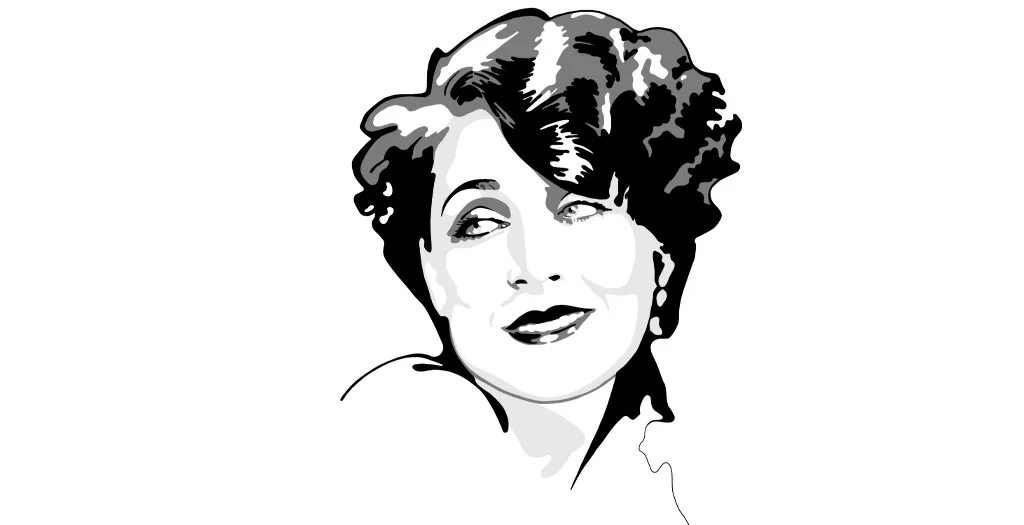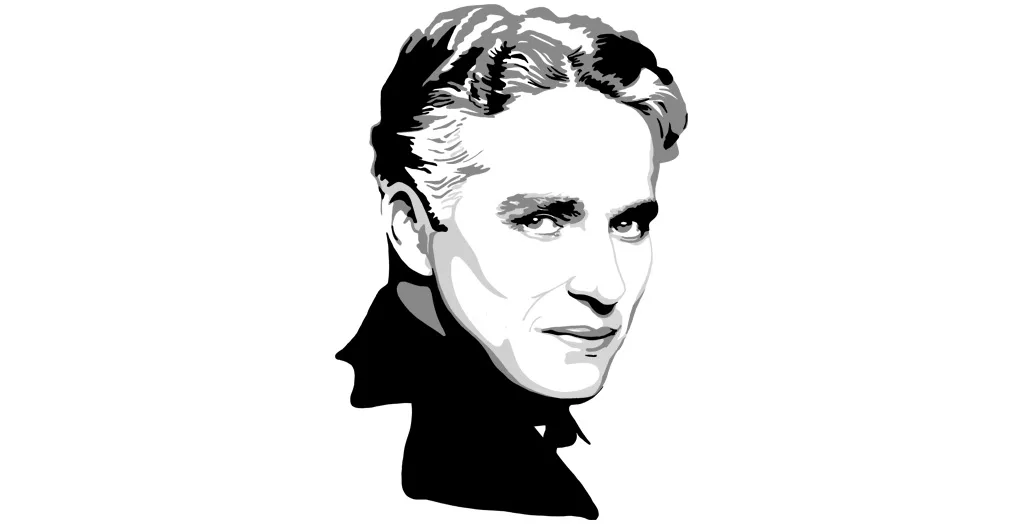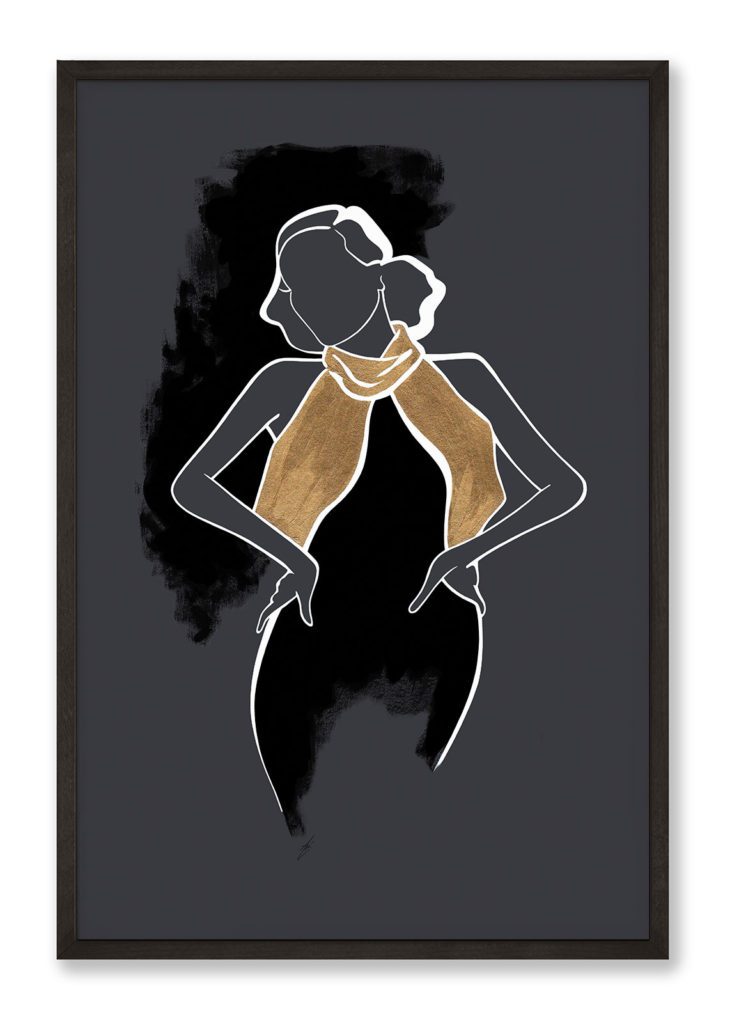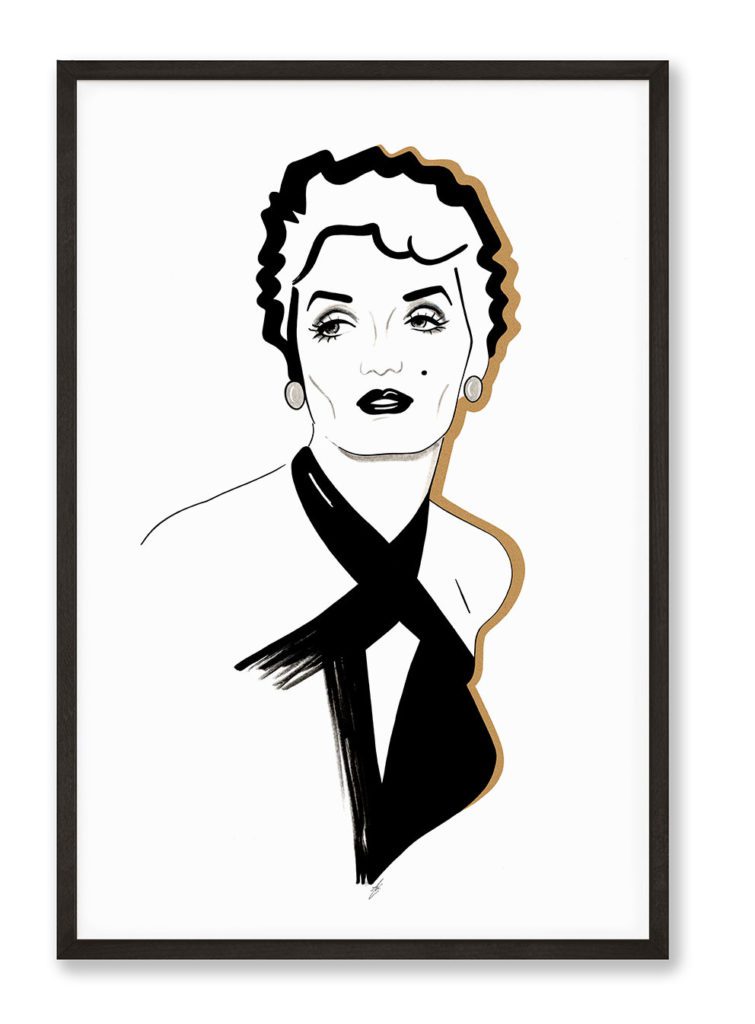Marlene Dietrich
German roots, long legs and an American heart




Hi, I'm Kate!
What I am most passionate about is to inspire you to see that your life is your own and biggest masterpiece.
Marlene Dietrich was one of the most successful German actresses of Old Hollywood, a high-profile entertainer, a very successful marquee live-show performer – and is named the ninth greatest female screen Legend of classic Hollywood cinema.
LISTEN TO THE PODCAST
SUBSCRIBE TO THE PODCAST
Begininngs
Marie Magdalene Dietrich was born December 27, 1901 in Berlin, Germany.
Her parents were rather well off – her mother Wilhelmina Elisabeth Josefine’s family owned a jewelry and clock-making firm, while her father Louis Erich Otto Dietrich, was a police lieutenant. When Marie Magdalene was six years old, and her older sister Elisabeth 8, their father died at the age of 41. His best friend swooned in and married the widow six years later. But, he never adopted the Dietrich sisters – that’s why Marlene kept her name throughout the years. What did change was her first name – when she was 11 years old she just merged her two first names from Marie Magdalene into Marlene. Marlene went to a girls school and a secondary school while stuying the violin. She even wanted to become a violin player, but a wrist injury cut that dream short.
Instead, she became a chorus girl in the vaudeville circles and danced in revues around Berlin. When she got rejected from the Max Reinhard drama school, she entered the Max Reinhard theaters anyway – but as a chorus girl instead.
Marlene’s first role was in 1923, when she was 22 years old in „The Little Napoleon“. The most memorable thing about the movie: Dietrich met her husband-to-be, Rudolf Sieber, on the set. They married the same year and had a little baby girl, called Maria Elisabeth Sieber, a short year later.
But, Marlene Dietrich continued working on the stage as well as in film both in Berlin and Vienna – the two major European cities for movies in the 1920s. Her most impactful performances were done on stage in musicals and revues that included singing and dancing. By the late 1920s, Marlene Dietrich had also managed to get bigger movie parts.
The biggest one would be the movie „Blue Angel“ in 1929, in which Marlene Dietrich plays Lola-Lola, a cabaret singer. It was directed by Josef von Steinberg at the Babelsberg film studios in Berlin. This movie also featured the Dietrich song „Ich bin von Kopf bis Fuß auf Liebe eingestellt“ / „Falling in Love Again“
Von Sternberg’s Hollywood
Von Sternberg, who already was established in the US, urged Dietrich to come to the US. She did so and signed a contract with Paramount Pictures. In short: Dietrich was supposed to be Paramount’s answer to MGM’s Greta Garbo.
For the following five years, Garbo worked with von Sternberg and starred in six movies. Von Sternberg is also the one who not only discovered Marlene, but the one that was incredibly instrumental in making her a glamorous movie star. He wanted her to lose weight and coached her extensively as an actress. He actually was rather imperious but Marlene apparently was one of the few actresses that worked effectively with him.
Von Sternberg and Marlene Dietrich had one of the most successful collaborations as a director and actress – unparalleled by any other except the Katherine Hepburn-George Cukor collaborations. The latter actually, though, is quite different in the sense that Cukor did not create the roles, the lighting, the filming and the script especially for her. Von Sternberg did exactly this: He used is unmatched skills of lighting and photography to stage Dietrich to the optimum effect. In addition, attention to the details of set-design and costumes made the six Dietrich-von Sternberg collaborations extremely stylish. Still until today, the visual style and glamour is unmatched.
It was Marlene’s first movie „Morocco“ opposite Gary Cooper that includes her probably most noted film appearance. In the movie, she is a cabaret singer and performs a number in a man’s white tie and then kisses a woman. Both were quite shocking for the time. And this movie also earned Dietrich her first and only Academy Award nomination.
Many critics still debate whether it’s von Sternberg or Dietrich that made the immense success possible. But, actually, it’s the combination and partnership between these two. Because after von Sternberg was fired from Paramount and the two did not collaborate anymore, they did not reach the same heights of success ever again.
Apart from ‚Morocco‘, they also collaborated on ‚Dishonored‘, ‚Shanghai Express‘, ‚Blonde Venus‘, ‚The Scarlet Empress‘ and ‚The Devil is a Woman‘.
Dietrich actually said about ‚The Devil is a Woman‘ that she thought she was the most beautiful in this particular movie.
Hollywood after von Sternberg
Dietrich’s movies without von Sternberg were definitely not as successful – neither critically, nor at the box office. Neither ‚The Garden of Allah‘ for David O. Selznick nor ‚Knight Without Armor‘ performed well, and ‚I Loved a Soldier‘ even ended on the cutting room floor instead of on the screen. All of these projects consumed large amounts of money and did not gross well. So, Dietrich was placed on the box-office poison list, keeping company with Greta Garbo, Joan Crawford, Mae West, Katharine Hepburn, Norma Shearer and Dolores del Rio.
Her movie ‚Angel‘ in 1937 was again poorly received – and lead Paramount to end Dietrich’s contract. The following two years, Dietrich did not do any movies. It was only in 1939 that Dietrich accepted another role – again encouraged by von Sternberg. It was the role of ‚Frenchie‘ in ‚Destry Rides Again‘ opposite James Stewart. It was quite against her usual type-cast. It was the role of a bawdy cowboy saloon-girl – and her song in the movie ‚See What the Boys in the Back Room Will Have‘ was a success that she recorded for distribution as well. She was cast in this type again for ‚Seven Sinners‘ and The Spoilers’
Yet, Marlene Dietrich never regained her former screen success although appearing in multiple movies throughout the 1940s and 1950s. She filmed with the greats of the industry like Billy Wilder, Alfred Hitchcock, Fritz Lang and Orson Welles.
Stage and Cabaret
In the 1950s, Marlene Dietrich started to concentrate to perform as a cabaret artist all over the world, which she continued to do exclusively after the end of her screen career.
In 1953, she got an offer from the Las Vegas Sahara Hotel to perform live for the sum of roughly $350k (if adjusted for inflation in 2023). The most iconic part of the short program, which only consisted of a few of her songs, was her custom Jean Louis dress: It was actually the dress that inspired Marilyn Monroe for the dress she wore when singing *Happy Birthday Mr. President* for JFK and that Kim Kardashian wore at the Met Gala. So, it was a nude colored silk dress, beaded with crystals that created the illusion of transparency of the dress, which actually was not see through at all.
Such was the success of the show that the contract was renewed and a new one signed for the Cafe de Paris in London. Later engagements included performances on Broadway, in London’s Queen’s Theatre, performances at Berlin’s Titania Palest theatre after WWII as well as a tour throughout Israel.
Instrumental to her success on stage was her manager Burt Bacharach. He helped her transform her nightclub act into a theatrical one-woman show of longer duration. She performed songs from her movies as well as popular songs of the time. Another change visually was the costumes. She performed the first part in a body-hugging dress and a swansdown coat and the second one in top hat and tails. The latter enabled her to perform songs that were usually performed by male performers.
They worked together for roughly seven years until Bacharach wanted to dedicate his time so songwriting exclusively. Marlene Dietrich would say about this time that she felt like she los her director, her support, her teacher, her maestro.
I find it fascinating that the success of this woman was made possible by two men: Von Sternberg and Bacharach respectively for film and stage.
Marlene’s Little Helpers
Marlene Dietrich is one of the very few stars who actively performed high into her 70s. Her health though was not as resilient. In 1965, she suffered from and survived cervical cancer. She also had poor circulation her legs. In 1973, 1974 and 1975, Marlene Dietrich fell three times, injuring and fracturing her right leg twice. She got increasingly addicted to alcohol and painkillers.
Style
Marlene Dietrich has been a fashion icon for decades and will continue to be so for many more to come. And, it was all for the image. She is quotes for saying: “I dress for the image. Not for myself, not for the public, not for fashion, not for men. If I dressed for myself I wouldn’t bother at all. Clothes bore me. I’d wear jeans. I adore jeans. I get them in a public store—men’s, of course; I can’t wear women’s trousers. But I dress for the profession.”
Edith Head, iconic costume designer to the stars, acknowledged Dietrich for knowing more about style and fashion than any other actress.
Her androgynous style of clothing, using top hat and tails as well as establishing trousers when they were still not allowed women to wear and the reason why she got arrested multiple times, are still hallmarks of women’s use of fashion.
As she grew older, Marlene Dietrich used not only expert makeup and wigs, but also body-sculpting undergarments, and nonsurgical temporary facelifts, which today are being revived as tapes. Marlene Dietrich actually invented the non-surgical Croydon Facelift, which involved twisting tiny strands of hair around hairpins, that were then pulled tight and fixed further back on to the head. Later, she would use a fine gold chain under her chin and behind her ears that was concealed by hair. The chain held back sagging skin and made her look way younger.
And, there is still the rumor that Dietrich got her molars removed to accentuate her famous cheekbones when she got older.
Private and Love Life
Marlene Dietrich is an extremely interesting character indeed and two things are contributing to the allure of the blonde Venues from Berlin:
For one, she was an image, she was Marlene Dietrich, the actress – her private life was largely hidden from the public.
Second, she was openly bisexual and played with or defied gender roles and morals throughout her entire career. For example, she frequented the gay clubs and drag balls that were quite frequent in the 1920s in Berlin. She also trained boxing at a prizefighters boxing club that had opened for women.
Even though she got married to Rudolf Sieber quite young and had her daughter one year into the marriage, this did not stop her from conducting multiple affairs – even with the knowledge of her husband, who often read her correspondence with the men and women she was involved with. Among those was Gary Cooper (during his affair with Lupe Velez), John Gilbert (who also had an affair with Greta Garbo), Douglas Fairbanks Jr. (while he was married to Joan Crawford) and James Stewart. Her short-lived affair with James Stewart during ‚Destry Rides Again‘ even resulted in an unwanted pregnancy – and an abortion. Other lovers included Yul Brynner, Errol Flynn, George Bernard Show, the Kennedybrothers, John Wayne, Frank Sinatra and Kirk Douglas.
But she also conducted relationships and affairs with women, including Suzanne Baulé, Mercedes de Acosta, Ann Warner, Claudette Colbert, Dolores del Rio and possibly Edith Piaf. Piaf was one of Dietrich’s closest friends during her years in Paris and Dietrich even served as maid of honor during Piaf’s wedding to Jacques Pils in 1952. Nevertheless, there were rumors that something more was between them than just friendship.
Her husband and his mistress Tamara Matul (*Tami*) lived in Europe and later in San Fernando Valley, near Hollywood. Tamara Matul actually was with Rudolf Sieber and Marlene Dietrich for most of their married live. She even lived with them in some instances, accompanied them and always had a room near them. But, being the second to Marlene Dietrich, receiving there unwanted clothes and always being in the shadow contributed to her poor mental health which eventually got her into a mental institute, where she died in 1965.
War efforts & Political activities
Marlene Dietrich was very political and voiced her opinions openly. In the late 1930s, she started to donate money for Jewish immigrants and those wanting to escape from Germany.
When Marlene Dietrich was approached by the Nazis to become a German actress helping the Nazi regime, she declined and became a naturalized US citizen instead.
During WWII she was one of the first public figures to help the war effort, sell war bonds and perform before troops. She went to the front lines in Europe, putting herself in danger, to keep the spirits of the troops high and put on shows that extended far beyond her usual repertoire, including even mind reading sessions and the musical saw. It was entertainment particular to her audience. She even recorded songs especially for demoralizing the enemy troops via the OSS (Office of Strategic Services).
In short: Marlene Dietrich was quite instrumental in the US war efforts and received the Medal of Freedom in November 1947 for her „extraordinary record entertaining troops overseas during the war.“
Marlene’s political activism did not stop there, though. She still kept contact with world leaders like Ronald Reagan, Mikhail Gorbachev and Margaret Thatcher. She appeal for saving the Babelsberg Studios in 1989 and spoke on television when the Berlin Wall feel.
Later years
Marlene Dietrich ended the active part of her career in 1975, after the second leg fracture. Her final on-screen appearance was in 1979 in ‚Just a Gigolo’ opposite David Bowie. Afterwards, she was only occasionally active, for example in 1988, when she spoke introductory words for a nostalgia album by Udo Lindinberg.
She relocated to Paris and spent her last 13 years mostly bedridden in the apartment with only a few people allowed to visit her. She wrote many letters (roughly 300.000 documents are included in her estate. Consisting mostly of letters. She kept correspondence with Burt Bacharach, Yul Brynner, Karl Lagerfeld, Ronald and Nancy Reagan, Ernest Highway and Orson Welles for example), and was on the phone constantly.
She died in 1992 of kidney failure at age 90. A requiem mass was conducted in the church of La Madeleine in Paris, which was attended by roughly 1500 people in the church and many thousand more outside.
She wanted to be buried in Berlin near her family and family home – so, today she is interred at the Städtischer Friedhof III in Schöneberg, Berlin.
You can see most of her estate at the Filmmuseum Berlin.
Legacy
Critic Francis Wyndham tried to capture the phenomenon of Marlene Dietrich pointedly in 1964: “What she does is neither difficult nor diverting, but the fact that she does it at all fills the onlookers with wonder … It takes two to make a conjuring trick: the illusionist’s sleight of hand and the stooge’s desire to be deceived. To these necessary elements (her own technical competence and her audience’s sentimentality) Marlene Dietrich adds a third—the mysterious force of her belief in her own magic. Those who find themselves unable to share this belief tend to blame themselves rather than her.”
She will always live on as a fierce German entertainer and actress, a beautiful woman, a decent human being and a woman fighting for the equality of women and their right to express themselves – sexually and sartorially.
With all my love!
xx






